

Takeaway Homework Menus: The Basics
Takeaway Homework Menus are based on an original idea by “Twitter phenomenon and outstanding teacher” Ross Morrison McGill ( 100 Ideas for Secondary Teachers ) – webmaster of the inspirational Teacher Toolkit site – and if you’re not familiar with the idea, the basic premise is a simple one:

Instead of giving all your students a single “Homework Task” (an essay, a set of questions or whatever is appropriate to the course you’re teaching) you give them a menu of possible choices from which they can choose the homework they want to do.
This could be as simple as a choice of doing one from a selection of 5 or 6 different essays or, as in the majority of Takeaway Homework Menus, students are required to select from different types of task. This usually involves the Menu being:
1. Organised into sections , such as Starters, Mains and Desserts to maintain the Menu theme. Students may, for example, be required to do homework tasks selected from each part of the menu in the following ways (examples taken from this Express Crime and Deviance Takeaway homework menu , created by Miss Coleman to “Deliver fresh, hot and delicious homework tasks straight to your doorstep!”).
- Starters may involve small and simple tasks ( Write a tweet or no more than 256 characters explaining a Sociological key term covered in the Crime and Deviance unit).
- Mains are usually more-involved and take longer to complete ( Create a ten-question quiz for your classmates based on one area of the Crime and Deviance unit).
- Desserts are again relatively straightforward tasks but can be used to test different skills to those included in Starters ( Choose one piece of marked work in your book and re-do it, ensuring that you are responding to feedback and making improvements where necessary).

What to include in each section is, of course, something for you to decide – Starters could include simple small-mark questions, while Mains could be a selection of essays – and the format’s flexible enough to incorporate a wide mix of practical and theoretical activities. If you want a further (sociological) example, the eponymous Miss Coleman has created a similar Takeaway Homework menu for social inequality .
2. Differentiated in terms of difficulty : The example Crime and Deviance Template uses a “Periometer Chilli Scale” as a way of indicating the level of difficulty: 1 Chilli equals “mild difficulty” while 3 equals a high difficulty. Students simply chose the Homework that they (and you) think best suits their particular needs at any given point in the course.
As you’ll discover if you explore this general idea further there are many different ways to put your Takeaway Menu together, depending on what you’re trying to achieve. There are also different types of template you can use, but for the moment, the easiest way to get to grips with the Takeaway technique is probably to have a look at some of the ways other teachers have used and shaped it and then devise your own Menu that meets the needs of both the Specification you’re following and the different students in your class.

This Takeaway Menu , for example, is based around “Nandos” and uses the same Periometer idea as above to create a simple structure of ascending difficulty (from “Extra Mild” to “Extra Hot”). Unless you teach some sort of Performing Arts class you can ignore the content – I’ve just left it in to show the range of differentiated tasks – and instead use the blank Takeaway Menu to add your own questions / tasks using the Text function of the free Adobe Acrobat Reader.
Alternatively there’s a similar Word-based Takeaway Homework menu Template you can download. Just add your own tailored content for an Instant Takeaway Menu. If you’d prefer something ready-made ( pre-cooked? ), have a look at the Nando’s Families and Households Takeaway Homework menu or the Pizza Express Mass Media Takeaway Revision Menu . Both were created by Lucy Cocker and are a good source of ideas, examples and inspiration. Both are Word documents which makes them relatively easy to edit if you want to create your own Takeaway Homework menus based on either template.
And if you want a little more context about Takeaway Homework, have a look at these basic instructions (with a few examples you can adapt) .
Alternatively try these more-detailed instructions and a short explanation of one way to put your own Menu together .
Share This Post
- Click to share on Facebook (Opens in new window)
- Click to share on LinkedIn (Opens in new window)
- Click to share on Pinterest (Opens in new window)
- Click to share on X (Opens in new window)
- Click to share on Reddit (Opens in new window)
- Click to share on Tumblr (Opens in new window)
- Click to share on WhatsApp (Opens in new window)
- Click to print (Opens in new window)
- Click to email a link to a friend (Opens in new window)
- Click to share on Pocket (Opens in new window)
Related Posts You Miight Like:
Stay updated.
Enter your email to be notified when we post something new:
Type your email…
Archived Posts
Recent Posts
Sociology film club, how much do you really know about crime, investigating sociology: powerpoint, the spirit level at 15, the real csi, short cutstv, privacy policy.
Classroom Freebies
May 13, 2020 · 2 Comments
Spelling Menus For All Year
3-5 · All Freebies · PK-2
Hey teacher friends! Hope everyone is fantastic today!
I was doing some updating yesterday and wanted to freshen up a super popular freebie: my Differentiated Spelling Homework Menu!

I used this menu in third grade (though it could be adapted easily by other grade levels as well), and the students, parents, and administrators loved it! I did too, because I was able to only grade spelling homework once a week, rather than a daily assignment each day.
By assigning the homework on Monday for the rest of the week, it allows families who might have sports or family emergencies to work on the homework throughout the week when it is most convenient for them. A great many parents have verbally shared with me how they loved this option.
Students like it better because they have a choice. They all have to complete the same amount of points {or that can be differentiated as well if needed}, but each child can choose how many assignments he or she needs to complete in order to get to the required level of points each week. And they are able to change it up and choose different activities whenever they like.

I loved it because I was able to grade once a week and also to see the creativity and choices come alive in the work students were turning in. I also didn’t have to run nightly homework copies – or tear out pages in a workbook! Students supplied their work on paper from home. Of course, you will always have a couple who “halfway” do the work – or forget and don’t turn it in at all. That happens though with nightly homework, so the same consequences should result.
I love menus for differentiating and allowing student choice with guidelines in place. The freebie menu packet below comes with a basic plain template with no graphics, along with 12 other monthly “themed” pages, in case you want to change things up a bit to liven it up.
Hopefully your students will love the choice factor as much as mine did! Feel free to pass along the link for this page to other colleagues in your school who also might like a change from the usual spelling routine.

Thanks so much and happy homework-ing!
This post originally appeared at Organized Classroom .
You Might Also Like:

About Charity Preston
A teacher, mom, wife. Featured in Scholastic Instructor Magazine, NEA, TeachHub, and Edutopia, Charity has over a half million fans and followers all over the world. A former K-6 gifted intervention specialist, she has built and managed over 20 educational related websites since 2011, and collaborated with high profile companies, such as eBay, ASCD, and Pinterest. Charity is the CEO of PEN Group Online, Inc. where she has taught her classroom and teacherpreneur business development systems to thousands of fans and members.
Megan Amberg says
May 21, 2020 at 12:06 pm
I really am interested in the differntiated spelling activities for a year, but can not get any further than the pg where I leave my email etc to be able to get the resource. I have put a personal email. It just spins…..I have tried over a few days. Any suggestions?
Charity Preston says
May 27, 2020 at 4:32 pm
Hi Megan! I’m guessing your email or server is blocking the pop up. After you enter in your info, the freebie will be delivered via email to your inbox (sometimes it ends up in spam).
Leave a Reply Cancel reply
Your email address will not be published. Required fields are marked *
SPECIAL COPYRIGHT NOTE This site is copyright protected. Nothing can be reposted on this site (excluding the button features) without written permission from the author. This includes writing, photographs, images, and downloads. This blog is a collaborative blog written by a group of individuals, and each author owns and is accountable for his/her postings. Disclosure: There may be affiliate links in this post. If you click through and make a purchase, the author may receive a commission at no additional cost to you. For questions about this blog, please use the contact form link located HERE .
- Primary Hub
- Art & Design
- Design & Technology
- Health & Wellbeing
- Secondary Hub
- Citizenship
- Primary CPD
- Secondary CPD
- Book Awards
- All Products
- Primary Products
- Secondary Products
- School Trips
- Trip Directory
- Trips by Subject
- Trips by Type
- Trips by Region
- Submit a Trip Venue
Trending stories
Top results.

- Teaching Resources
- Editable Takeaway Homework Menu
Homework menu – Editable takeaway-style PowerPoint

PowerPoint menu template file
This homework menu sheet takes the format of an editable, printable PowerPoint template. It’s designed to engage students and make homework an enjoyable and varied experience.
Engaging format
The takeaway menu format is visually appealing and familiar to students, making homework less intimidating and more enticing.
Customisable homework menu
This homework menu PowerPoint template is highly customisable, allowing you to tailor the tasks to suit the needs and abilities of your students.
Whether you are focusing on literacy, numeracy or any other subject, you can easily modify the template to fit your curriculum and the specific learning objectives of your class.
Differentiated learning
Our homework menu sheet promotes differentiated learning by offering tasks of varying difficulty levels. The ‘Light Bites’ section includes three easier options for students who may need a gentler introduction to the material.
The ‘Specials’ section features a more complicated option for those ready to be challenged.
‘Mains’ provides three more time-intensive tasks, while ‘Sides’ and ‘Extras’ offer fun, lighter activities to balance out the workload.
Encourages choice and autonomy
Students need to choose at least one of the top two tasks and an extra from the bottom three. This choice empowers students to take control of their learning, making them more invested in their work and more likely to complete it with care and interest.
Variety of learning experiences
The template includes ‘Desserts’ and ‘Sides’, which are fun ways to learn through play and lighter tasks, ensuring that homework isn’t just about hard work but also about discovering the joy in learning.
These sections help to keep the tasks varied and enjoyable, preventing homework from becoming monotonous.
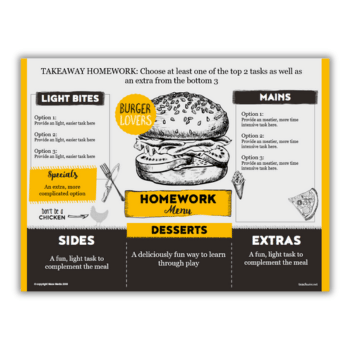
Similar resources
- The Fate of Fausto – KS2 planning for this Oliver Jeffers book
- Christmas art KS2 – Use balloons to create light-themed artwork
- Ofsted framework – 7 key curriculum questions for SLT
- The Girl at the Front of the Class – Teaching resources for KS1/2
- Healthy eating KS2 – Free medium-term plan with resources
Sign up to our newsletter
You'll also receive regular updates from Teachwire with free lesson plans, great new teaching ideas, offers and more. (You can unsubscribe at any time.)
Which sectors are you interested in?
Early Years
Thank you for signing up to our emails!
Explore teaching packs

Why join Teachwire?
Get what you need to become a better teacher with unlimited access to exclusive free classroom resources and expert CPD downloads.
Exclusive classroom resource downloads
Free worksheets and lesson plans
CPD downloads, written by experts
Resource packs to supercharge your planning
Special web-only magazine editions
Educational podcasts & resources
Access to free literacy webinars
Newsletters and offers
Create free account
By signing up you agree to our terms and conditions and privacy policy .
Already have an account? Log in here
Thanks, you're almost there
To help us show you teaching resources, downloads and more you’ll love, complete your profile below.
Welcome to Teachwire!
Set up your account.
Lorem ipsum dolor sit amet consectetur adipisicing elit. Commodi nulla quos inventore beatae tenetur.
I would like to receive regular updates from Teachwire with free lesson plans, great new teaching ideas, offers and more. (You can unsubscribe at any time.)
Log in to Teachwire
Not registered with Teachwire? Sign up for free
Reset Password
Remembered your password? Login here


Using Math Menus in Your Classroom
- March 20, 2022
By now you probably know all about math menus. If not, head over to this post, The Basics of Math Menus , and then come back when you are ready to learn more! If you are ready to dive in with using math menus in your classroom, then keep reading! This post will take you through some of the most frequently asked questions about using math menus in your classroom.
How many students do you have in your class? How many groups do you have?
My classes currently range from 18 students to 26 students. I have 6 groups per class, and each group ranges from 3 to 5 students.
How often do you see each kid in a small group?
Every day, Monday – Thursday.
How do you monitor their work? Do you have students turn everything in?
They turn all of their Must Do activities in. If it is digital, they just turn it in on Google Classroom. If it is paper, we have bins that they use to turn in their work. I use my prep time to check their work. No work is brought home with me. I am very purposeful about the activities I choose for Must Do activities. I make sure some of them are self-checking, like picture reveals or riddles. Then some are simple to check, like a cut and paste sorting activity. Then some are more in depth, like my Dear Ms. Matherson error analysis activity. The type of activity determines the type of feedback I leave. For Dear Ms. Matherson, they are doing a lot of work, including a writing portion, so that takes more time for me check. For the May Do activities, most of these I do not check. We talk a lot about how this is their own learning. They need to take ownership of it. There are always a few kids that I need to talk to, but overwhelmingly, after setting expectations the first two weeks, and coming back to it when we need to, it works.
Do you grade everything?
No. Their menu work we look at as practice. This is the time to make mistakes, learn from them, learn new ideas from their group, get feedback, and more! On Fridays we have a quiz, and I grade that. That is the one time a week they are required to work independently. I also grade things when they are on the rug with me sometimes.
How do you manage to see every group every day? How long are your classes?
My classes are 55 minutes. When it is time for lesson with Ms. Matherson, groups come to the rug to meet with me. My small groups look like one of the following: 3 table groups at a time (for about 20 minutes) or 2 table groups at a time (for about 12 minutes). This still leaves time at the beginning for us to a number talk, estimation clipboard, identity journal, or something else together. I decide if I want 2 or 3 groups at a time depending on the objective. If I want students to have more practice time, and less hands on, I pull 3 groups. If I want less time but more hands on, I pull 2 groups.
How are students held accountable for the May Do work?
Some things they turn in, some things they don’t. Some things they have a chance to get feedback from peers on. It varies a lot depending on the May Do activity. But overall, setting clear expectations in the beginning of the year and revisiting it often is key. My students are in 5th and 6th grade. We talk a lot about how if they want to be given some freedom, they need to show they can handle it. But the overall classroom culture is key. It helps keep the May Do options available.
How do you pick May Do options?
There are a lot that I keep every week. Then some I switch out. Some are kid suggestions. Math games are games I buy/have. Play is super important in math! Some are challenges I find online. Estimation Station is one that we do every week. Kids love it, and I am strategic about the clues based on skills I want them to practice. I want a variety. I want every kid to be able to find them accessible and find something that interests them. If you are looking for some of my May Do activities that are ready to go, checkout my Ultimate Math Menu Bundle !
Can students do Must Do activities in any order?
Yes! This helps bring more choice into the menus. It may seem like a small level of choice, but any choice students can have makes a big impact!
Do students have assigned parters for May Do activities?
No. They have to complete the Must Do activities with their group. For May Do activities, they can do them alone or with other kids from their group or other groups, as long as the kids they are working with have also completed all of their Must Do activities.

How can you get through a lesson if students are only with you for 20 minutes?
It depends on the lesson objective. Sometimes I take two days for an objective, sometimes I take one. It all depends. But regardless, the beauty of math menus is that they have so many different activities within a week on so many different objectives, that things are constantly spiraled and they are always getting more practice.
Do you do anything whole group?
Yes! We always start class together as a whole group. On Mondays we go over the menu for the week. If there is a new menu item we might practice it together. On Tuesday we do Estimation Clipboard. Wednesday we do our identity journal. Thursday we rotate a few activities, like Which One Doesn’t Belong, Esti-Mystery, Notice and Wonder, Number Talk, and more. Friday we pass back work and play Blooket. I also sometimes introduce the lesson whole group by giving them something to think about, watching a video, or something else. You can download some ideas for how to start class here .
Using math menus in your classroom will have a huge impact. Students are engaged, take ownership of their learning, get to learn from each other, and are constantly working on new skills. If you are looking for templates and activities to help you get started, check out my Ultimate Math Menu Bundle . It contains so many things you need to get started! Want even more support? Sign up for Math Menus: The Course to get all of the activities you need along with 15 videos of how to implement it in your classroom.
17 thoughts on “ Using Math Menus in Your Classroom ”
I was reading your post and it mentions a classroom tour, where can I find your classroom tour? I’m very interested in trying this after testing to prepare to start next year with math menus.
The classroom tour is on my Instagram, saved as a highlight!
- Pingback: Things to Consider Before Gamifying Your Math Classroom - Math with Ms. Matherson
- Pingback: Using To My Future Forgetful Self Notes - Math with Ms. Matherson
How many students in each group and how many groups do you have? Are you groups ability grouped or mixed ability?
Last year I had 6 tables. Each table had 3-5 kids, depending on the size of the class. When I would call them to the rug for our lesson, I would call 2-3 tables to create a small group. My groups were always mixed ability levels.
Where do we find information about the identity journal?
I got it on TPT. I think it is from thehappyclassroom
Hello Julia, I need ideas for the estimation station. Please help ! Thanks
Here are some things I use frequently: mini erasers, paper clips, cheerios, marbles, thumb tacks, and cotton balls.Then I have about 3 containers that I rotate through.
- Pingback: 4 Strategies for Adding and Subtracting Decimals - Math with Ms. Matherson
Hello! I really love the idea of math menus, and I plan on incorporating them this year in my math class. I’m wondering how you go about giving students the work needed for the menu? Do you give them all of the work that goes with the menu at one time on Monday? Or do you give them the work daily? Also, do they keep their menus in their folder/binder along with the work they need for the week?
Great question! They get their menus on Monday. They get the work daily, and extra worksheets go into a stack of drawers. Each drawer is labeled my day and subject, so “Monday Math” and “Monday ELA.” There is also a drawer for extra menus. This is great because if someone was absent then they don’t need to ask me for the worksheet, they just go to the drawers and take what they need. The students keep their menus in a math folder. I ask them to turn them in on Fridays so I can make sure they are keeping up with checking things off, and also so they don’t have a ton of menus in their folder.
Hello. I was wondering how you fit in quizzes and tests. They are mandated for us so I was curious on how/if you incorporated them.
Hi! Yes, they happen in our curriculum. I either replace the lesson with that and then they do menus after, or we do them in place of Menus. It depends!
I have 2 questions – now that I have finally gone through the course that I bought last summer!
1. Do you think I could start implementing this as we start the second semester? I NEED to get my kids more independent.
2. How do you adjust the routine for days when you have a sub?
Hi! I think that this can be started any time of year, you just need to take the time to get the routines in place. Subs LOVE menus. They run themselves! If I know I will be absent, I just put extra Must Do activities. If it is a last minute absence, I give something to do before menu time.
Leave a Reply Cancel reply
Your email address will not be published. Required fields are marked *

Hi, I'm Juliana!
I help upper elementary and middle school math teachers create an engaging classroom so that their students become problem solvers!
Let's Connect!
More blog posts.
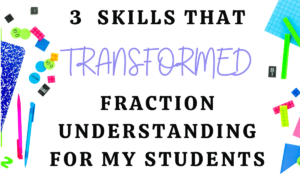
3 Skills that Transformed Fraction Understanding for My Students
Teaching fractions can be one of the most challenging tasks for any math educator. Fractions often feel abstract and confusing to students, leading to frustration
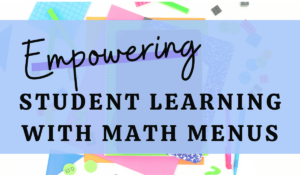
Empowering Student Learning with Math Menus
As educators, we’re constantly seeking innovative ways to engage our students, promote ownership of learning, and foster academic success. One strategy that has transformed my
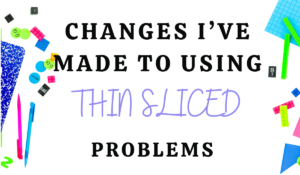
Changes I’ve Made to Using Thin Sliced Problems
This is my 5th year using thin sliced problems in math class. Let me start by saying it is one of my favorite things I
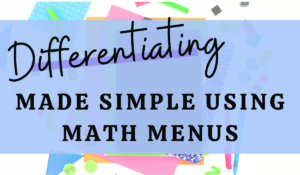
Differentiating Made Simple with Math Menus
As educators, we are always told to differentiate. As teachers, we want to do what is best for our students. But often times it can
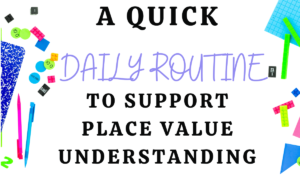
A Quick Daily Routine to Support Place Value Understanding
Do you teach upper elementary or middle school and looking for something to support students with fractions, decimals, or percents? Then keep reading! Here is

Top 4 Items for a Successful Small Group
As math teachers, we are always being told that small group instruction is best. We get to meet the needs of our students better if
Privacy Overview
| Cookie | Duration | Description |
|---|---|---|
| cookielawinfo-checkbox-analytics | 11 months | This cookie is set by GDPR Cookie Consent plugin. The cookie is used to store the user consent for the cookies in the category "Analytics". |
| cookielawinfo-checkbox-functional | 11 months | The cookie is set by GDPR cookie consent to record the user consent for the cookies in the category "Functional". |
| cookielawinfo-checkbox-necessary | 11 months | This cookie is set by GDPR Cookie Consent plugin. The cookies is used to store the user consent for the cookies in the category "Necessary". |
| cookielawinfo-checkbox-others | 11 months | This cookie is set by GDPR Cookie Consent plugin. The cookie is used to store the user consent for the cookies in the category "Other. |
| cookielawinfo-checkbox-performance | 11 months | This cookie is set by GDPR Cookie Consent plugin. The cookie is used to store the user consent for the cookies in the category "Performance". |
| viewed_cookie_policy | 11 months | The cookie is set by the GDPR Cookie Consent plugin and is used to store whether or not user has consented to the use of cookies. It does not store any personal data. |
One Extra Degree
Subscribe for updates!
Reading Response Menus: A Recipe for Reading Success!
December 15, 2013
To say that my life has been a whirlwind over the past two weeks would be a pretty big understatement, but here I am. My sweet pup is back in surgery again, and we’re pretty much breathing into paper bags over here. Vet bills (especially pet emergency bills) are seriously panic inducing! It should be a crime to charge that much! Am I right?! On top of that, I landed in the ER over the past week myself, my dad’s had some health complications, and my hubby was in a minor car wreck. Thankfully, we’re all doing okay! I guess it’s just one of those seasons in my life. I’ve been through many of them already in my 29 years, and I am sure I will go through many more. 😉 I am just trying not to fuss… and I’m trusting that God will take over. He always does, and He always provides. I’ve had my fair share of life traumas, and I’ve always come out of the other end stronger than before, and changed for the better. Do you know what though, I am so blessed with great friends, a supportive family, and an extended support system of bloggers and blog followers, so who could really ask for anything more?! Except maybe more time to blog. I’ve been really iffy lately. Ha! I have a lot of catching up to do, and several things to (hopefully) work into some blog posts once things slow down over our holiday break. I’ll just go ahead and cross my fingers now!
Needless to say, I’ve been a little preoccupied, and it’s taken me FOREVER to finish my reading response menu packet. The good news is, I had plenty of time for field testing! We’ve been doing them for almost two nine-weeks, and the kids are crazy about them! I am even MORE crazy about how well it’s going! So, here’s the deal!
The Reader Response Menu: A Recipe for Reading Success packet is seriously one of my favorite resources ever. The 64 page packet (jam-packed with 41 different reading response menus and different templates for student responses) was created to address a variety of standards, higher-order thinking skills, and genres in an easily adaptable and predictable structure! What’s more, with this set, you can assign a different menu every week for the entire school-year without running out or repeating the same menu twice! These reading response menus can be used as homework (like I do with my class), as morning work, as part of your independent reading centers, as part of your literature circle approach, or they can be integrated into your interactive journals by cutting and gluing them into your notebooks! They can be used with your main selections, literature circles, small groups, or independent reading. No matter what, they are a great tool for differentiation and providing students with GUIDED CHOICE as they interact with texts. It’s been working like a charm! 🙂 Since I LOVE it so much, and it wasn’t finished in time for the site-wide sale, I’m putting it on sale for 20% off through tomorrow (Monday, December 16, 2013). I hope you will find them as useful as I do!
This is the template I use most often. I run homework packets with the Reader Response Menu on the top, with one lined page per response, and two copies of page 6, front to back! I assign it on Monday, and it comes back to me on Friday. The kids pick four out of the six activities to complete.
If you want to try your hand at incorporating this into an existing interactive notebook, you can use the templates I’ve included in the file. For this first template, I would cut down the middle so I had five independent flaps to work with and arrange on the page. The five flap flipbook is just another option. It has less writing space, but it’s nice and compact! If you wanted to play around with sizing on a printer, you could resize ANY of the pages in this file to customize it & make it work for you!
This is the only template for response number 6. All 41 menus have a box for vocabulary instruction because that is an area that I am always trying to grow. I want them to constantly be thinking about the words they are encountering in their texts, and this transfers between fictional and informational texts with ease. It’s definitely made a HUGE impact on the vocabularies of my own students this year!
Now that you’ve had a chance to check out the basic premise of the pack and what some of the templates look like, here’s how everything looks in action! I managed to take a few snapshots a few weeks ago! 🙂
Again, what do I love so much about this?! I love that I don’t have to spend time racking my brain week after week about what my students will do for homework. I love that every response is meaningful. I love that I can assign independent reading for homework without requiring them to fill out a reading log. I love that this extends the thinking they have already done while they read for twenty minutes at home. I love that they can choose their own books at their own levels, and it will work for all of my kiddos. I love that I could assign different menus to different kids if I wanted to. I love that it give students a choice in how they are going to demonstrate their understanding of the text. I love that it works with picture books and chapter books. I love that the process is predictable, so it becomes familiar to my students, and only the skills change. I also love that, should I ever decide to go a different direction with homework, this resource isn’t a wash. I could use it for morning work, and a whole year of MEANINGFUL morning work would be readily available. If I didn’t want to do that, I love that I could use them in Read to Self or small groups. I just LOVE the flexibility I have with this product, and most of all, I love how it has simplified my approach to homework while simultaneously stretching my students and improving their written responses. For someone who believes in trying to work smarter, not necessarily harder, this is a breath of fresh air. Happy Sunday, friends!

December 15, 2013 at 11:48 pm
Your Readers Response Menu is very cool. I need more stuff to help the students be more independent and hit the higher order thinking. Very cool!
-Jeremy @ Mr. Michelbook's Classroom
December 16, 2013 at 12:31 am
Thanks, Jeremy! This was definitely a labor of love, but I'm glad I put in the time. It definitely has helped my students think more critically and work more independently. Thanks for the compliment!
December 16, 2013 at 12:13 am
WOW!!! This looks absolutely amazing and would work perfectly as a reading response job the way I currently have my reading block organized! Heading to wishlist this right now!! PS. . . I'm saying a prayer for your pup, you, and your family, hoping that smooth sailing is on its way to you for the rest of the season! <3
THANK YOU for sharing your menus!! They look AMAZING! And SUCH a time saver!!
Ashley The Balancing Act I Call Life
December 16, 2013 at 12:32 am
Aww, thanks. 🙂 I really hope other teachers can use it and will find it as useful as I do! 🙂 It has been a really wonderful addition to my lessons this year, and I am sure it will be for years to come! Thanks for your well-wishes too! I appreciate the positive vibes!!!
December 16, 2013 at 12:23 am
I love your students' thoughtful responses. You're such an amazing teacher…I hope they realize how blessed they are to have you! Prayers for your family, your puppy, etc. and that life will be fabulous in the coming year!! Ashley Just Reed!
December 16, 2013 at 12:33 am
Ashley, you are always so, so sweet. Thank you so much. I hope you have a wonderful holiday season!
December 16, 2013 at 1:38 am
Wow your new pack looks amazing!
Looks like you have been handed a lot lately! What a lot of stress! I love your positive outlook on it all. I've been wondering how your dog is doing (and praying for you). I hope you have a very restful, peaceful holiday…and I hope your pup gets to spend it with you at home. :o)
December 16, 2013 at 4:03 am
Amanda, I have been sending positive thoughts your way! You have had a lot to deal with lately. But you are right, we are never handed more than we can handle, and it does make us stronger in the end. Hang in there! I love your latest creation and am off to buy it now! I hope you have a peaceful Christmas break and get a chance to breathe and relax.
December 18, 2013 at 1:17 am
This looks like a great tool, even for some of my higher-level 2nd graders. Best wishes to you and your family (and your pup!) for the holidays!
December 27, 2013 at 6:04 pm
Hi Amanda: I hope that, by this point, the pieces in your life are falling back into place. You sure had a lot going on… all at one time! I just dropped this pack into my cart. I think it will be the perfect way to "ramp things up" when we start back in January. Sending you lots of warm wishes and holiday blessings…
Kim Finding JOY in 6th Grade
December 31, 2013 at 7:53 pm
I just stop by to let you know I love your page and I had a good time reading it. I’m glad that my friend emailed me the link to this blog. I just bookmarked this blog and I hope your next one is going to be about the same topic again I’m looking for ward to it. One thing I want to add is I like your writting style.
Cccam Server
Leave a Reply Cancel reply
Your email address will not be published. Required fields are marked *
Save my name, email, and website in this browser for the next time I comment.
Math Professional Development Information
Need to get in touch?
Reach out on social media or send a message using the form below.
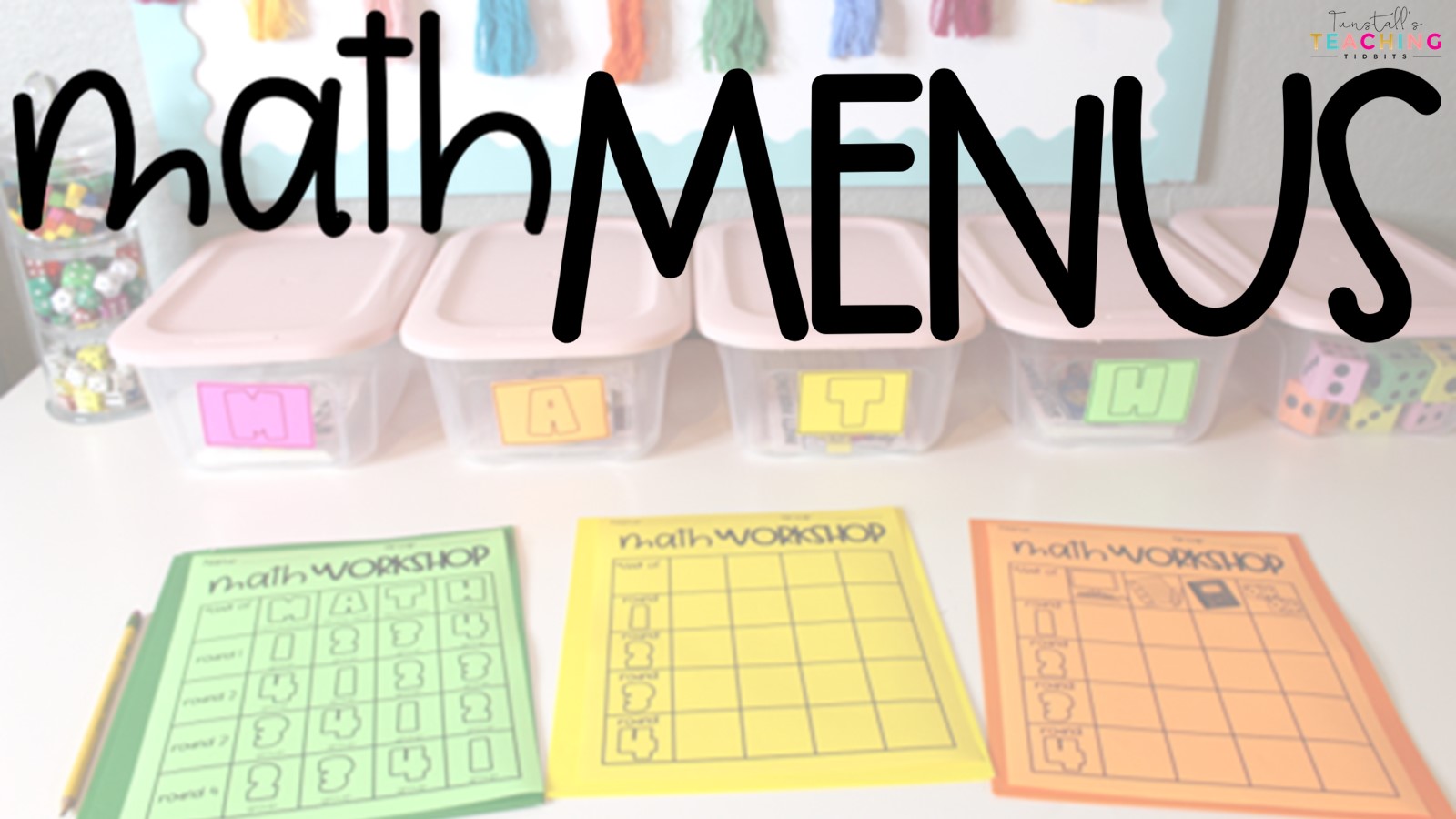
Math menus or math choice boards are a popular way to track student processes during math workstations. One of the two main management systems for running math workstations, or guided math, utilizes math menus. In this post, we will explore this self-pacing management system.
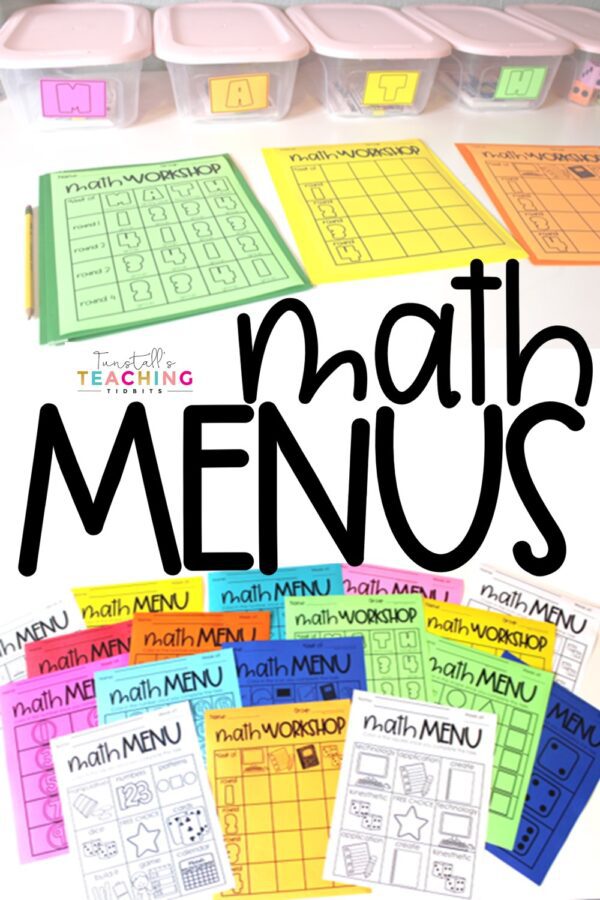
During the portion of guided math where the teacher conducts teacher-led small groups, the rest of the students engage in math activities. This time of the math workshop typically has students up around the room engaging in different math tasks. Math menus provide structure and accountability during this time. Because math menus are simple to implement and easy to differentiate, they have been a long-favored approach to managing this time of the math block.

Self-Pacing Mathematicians
The purpose of a math menu can be accountability for students. Because we as teachers are focused on seeing students in small groups for individualized instruction during this time, we can’t always track where everyone goes and how long they work there. The math menu provides a simple way for students to mark their progress. I have always chosen to have students use a math folder for placing all work, recording sheets, and math menus as they work through this time of our day. This is something I check weekly.

Differentiation
It’s easy to differentiate your math menus by color-coding folders and menus and/or providing more or fewer choice buckets per group. For example, students who pace more slowly or need a certain set of skills may need to visit three out of the six stations you have for the week. On the opposite hand, some students may need added activities on their menus.

Rotation Menus
I used math menus for years with success. I led other teachers through the implementation of this management system in their classrooms. Then one year, I had a particularly difficult class who struggled to self-pace or manage their workstation time. Not willing to give up my cherished small group instruction, I implemented an even more structured version of the math menu approach. This rotation system became our new way of managing math workstations. Students could still track their rounds or progress, but they tracked it based on a schedule I created for each group. This allowed me to direct them and to map where each person should be working.

This added structure was exactly what my students needed to thrive. Plus, I found that I was much more aware of my timing and schedule. It was a helpful tool for providing a more effective system for all of us.

Pre-filled and Editable Math Menus for You
You can find 36 different pre-filled and editable math menus to use with your class and math workshop. Click any of the pictures in this post or HERE to find those menus. The download also comes with the labels for your bins, drawers, or tubs–something for whatever system you enjoy for storing your math workstation activities.

Math Choice Boards
One tricky part of running math workstations is students who pace much faster than others consistently. These are the students who have high-quality work, but just tend to be fast finishers. Every year there are always a few students who have this quality. For those situations, I have math choice boards which we call Math-Tac-Toe . Students can work in a way that makes a tic-tac-toe pattern or complete the entire math board for expert status. This provides terrific effective work for these students who need more.
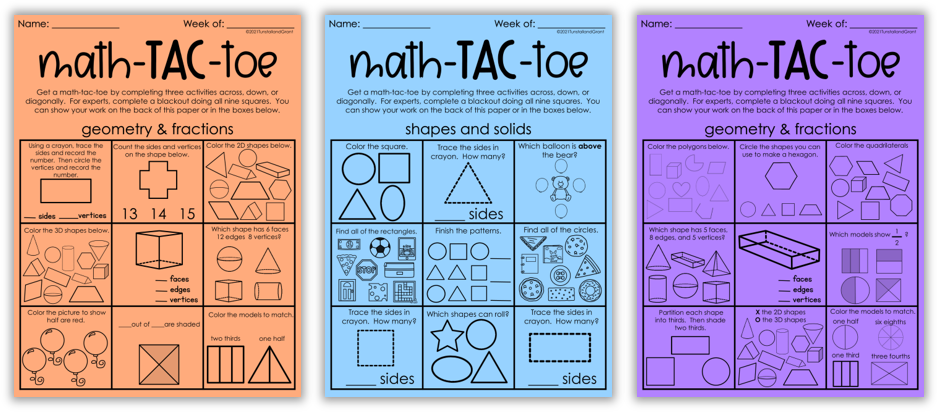
These 27 Math-Tac-Toe boards are differentiated for K-2 and make terrific work for a workstation, fast finishers, or even math homework. There are 9 different math topics and 3 boards per topic.
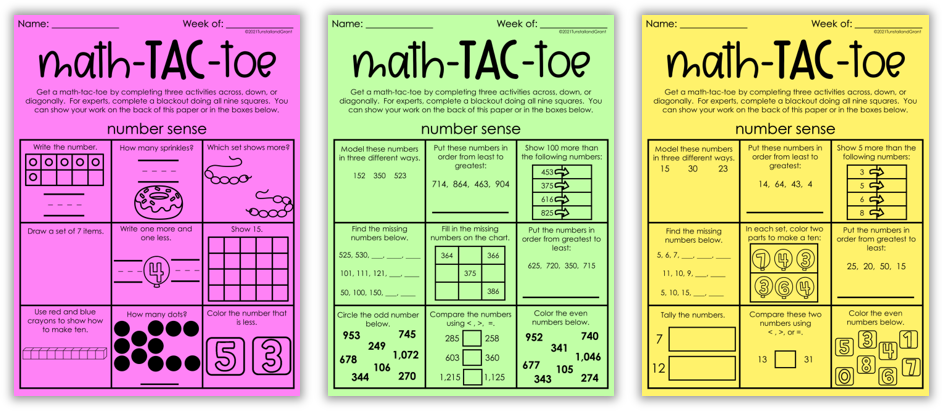
Fast Finishers Freebie for You
As a thank you for reading our posts and joining us in your teaching journey, we have a fast finishers freebie for you!
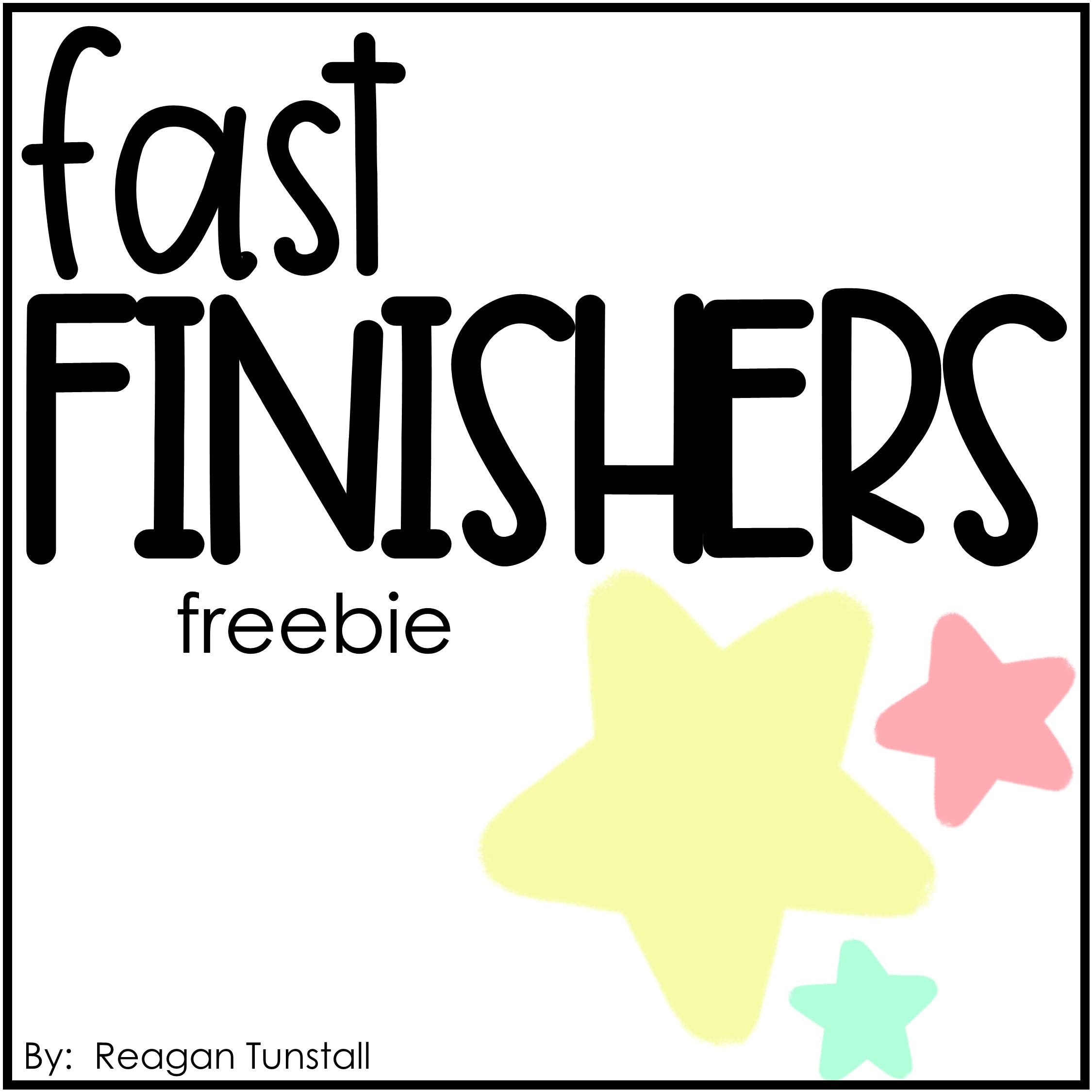
Guided Math Rotation Timers
To provide even further management of the workstation time, I have created guided math timers . Read THIS POST , to see how these work during this time as well!
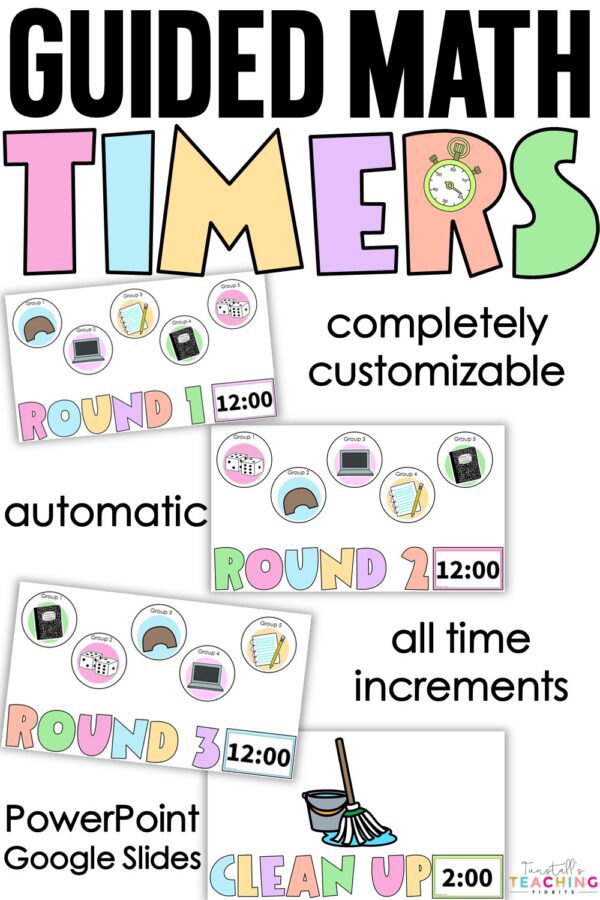
Similar Posts
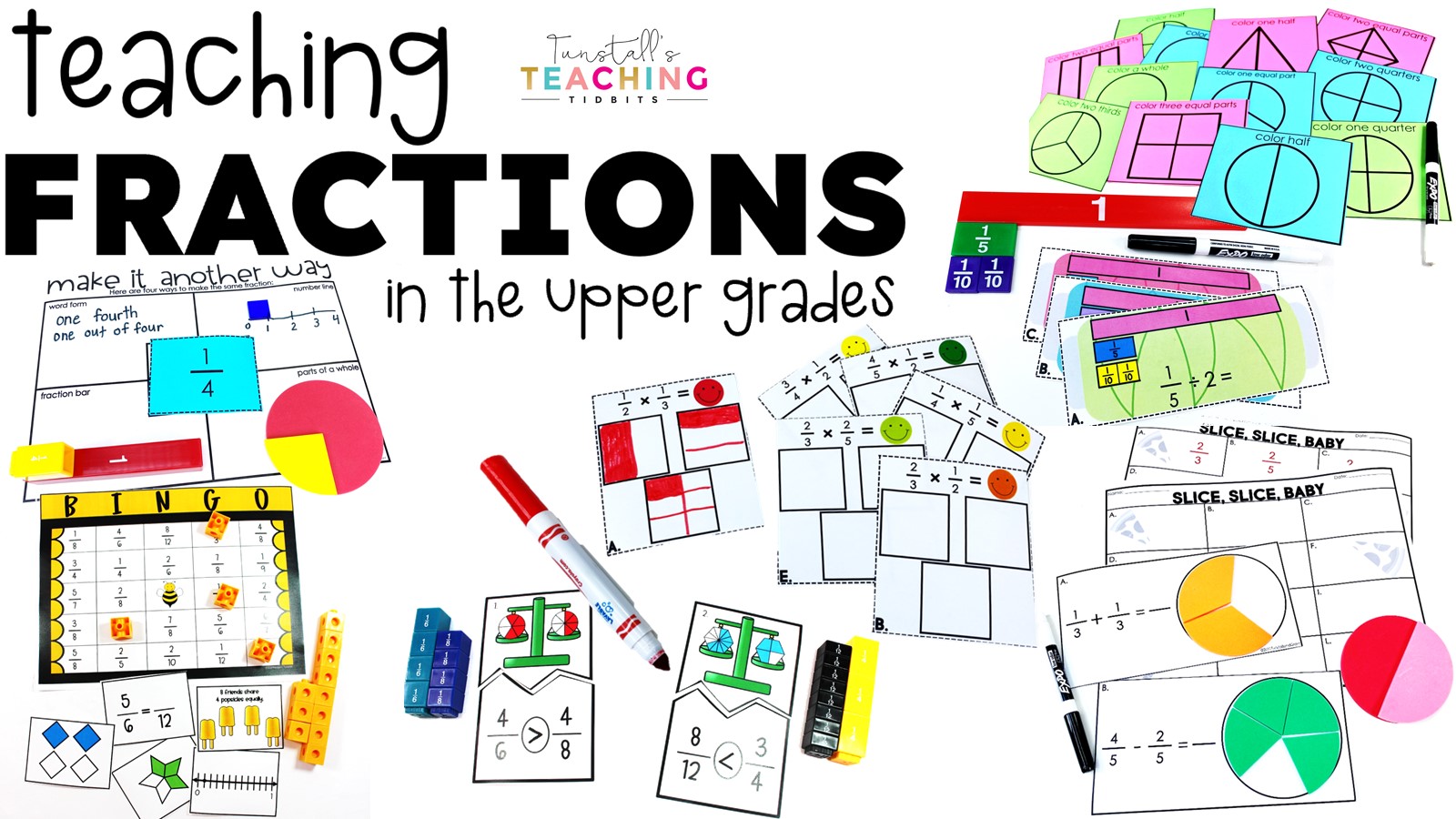
Fractions for Upper Grades
This post will focus on ideas and resources to teach fractions for upper grades. The thrill of learning fractions comes with some internal questioning of will I know what to…
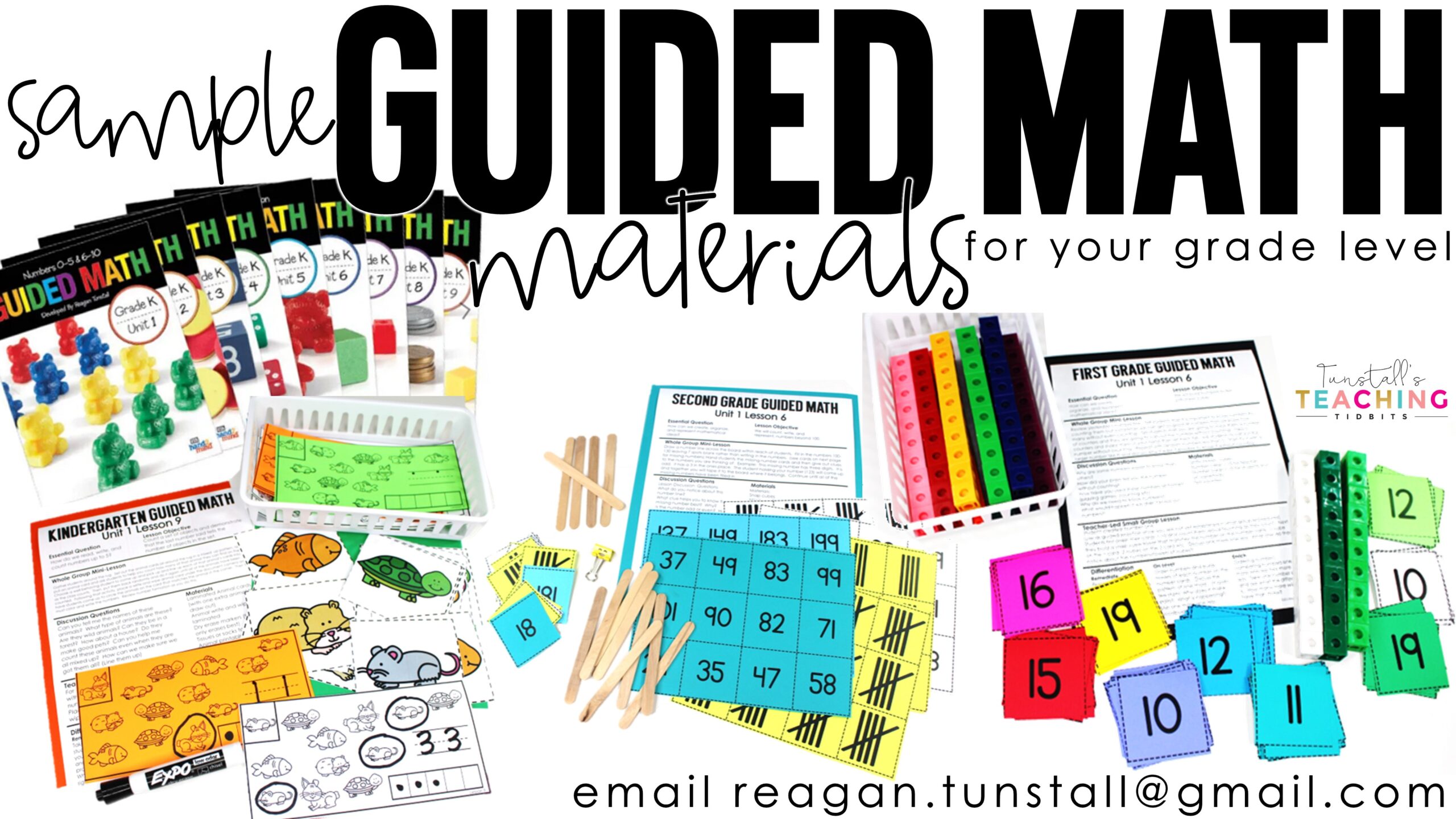
Sample Guided Math
With the overwhelming interest in Guided Math as a structure for running the math block, it is equally important to choose a resource or curriculum that aligns with the math…
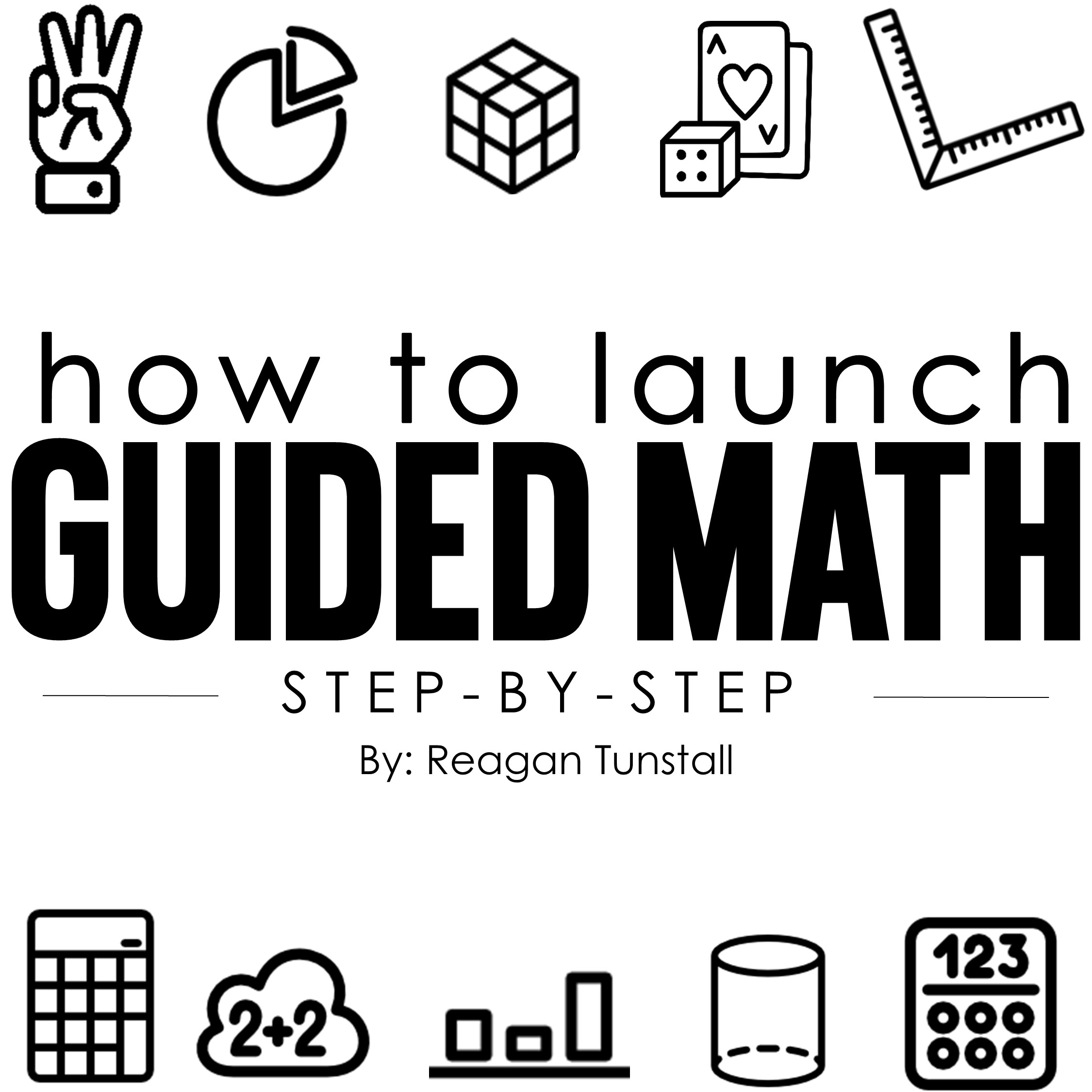
How to Launch Guided Math
This free guide will take you step-by-step through the process of How to launch Guided Math. It is meant to give you the structure and routine to try out a…

Geometry: Shapes, Solids, and Fractions
This is a closer look into unit 5 Geometry and Fractions. I love teaching these concepts because students that do not excel at crunching numbers, realize that there’s so much…
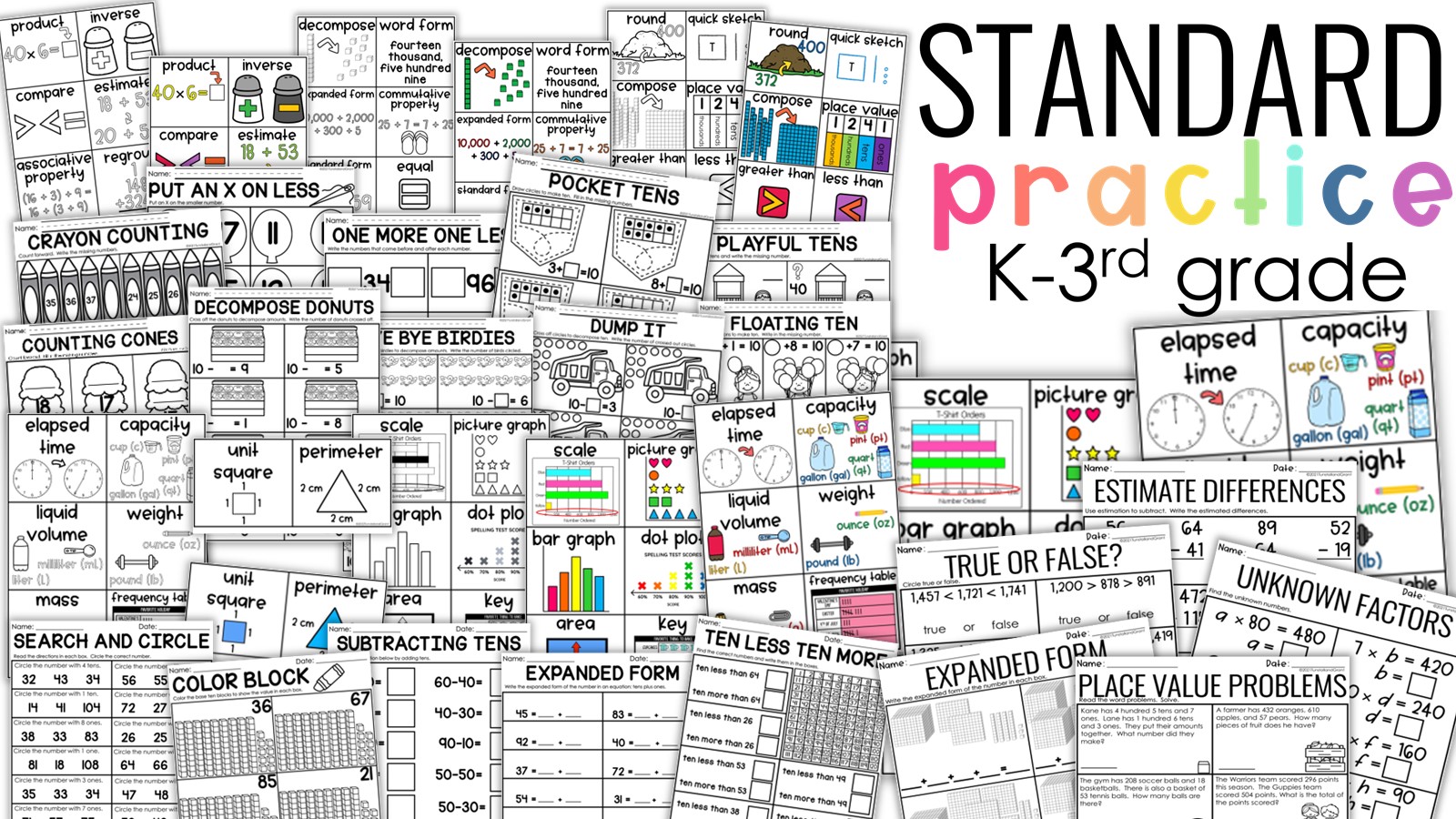
Standard Practice Skill Pages
While we regularly blog about many exciting hands-on math experiences here, today we are focusing on the independent practice component. Within the Guided Math block so many important math experiences…
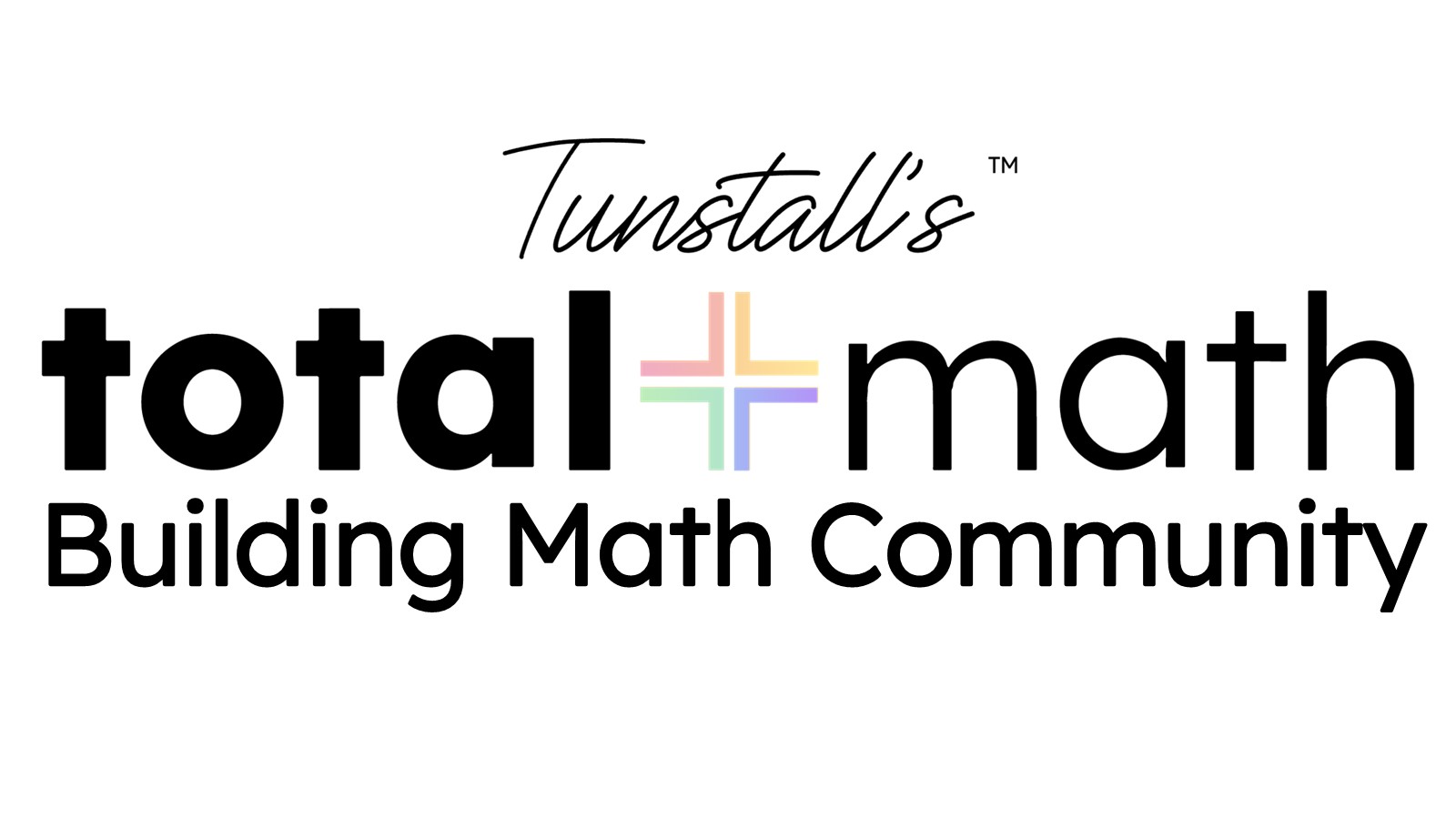
How to Build a Thriving Math Community from Day One
By following some simple steps, we can create a mathematical community where students feel empowered to take risks, ask questions, and explore the wonders of mathematics together. These practices we…
Leave a Reply Cancel reply
Your email address will not be published. Required fields are marked *
Resources you can trust
Takeaway menu: Tudor feast
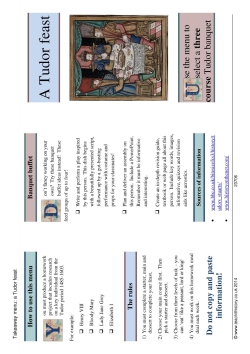
All reviews
Have you used this resource?
Resources you might like

IMAGES
VIDEO
COMMENTS
Try homework menus! Click for more info + free {editable} printables for 2nd and 3rd grade to get you started. Tips on how to organize homework practices using homework menus to motivate students and differentiate through choice. All subjects {reading, writing, math, spelling, word work} can be integrated for one stop homework shopping!
In this packet, you will find a zipped folder with two separate files. The first one is a secured PDF where I have typed in all of the boxes. I have monthly calendars, as well as two different weekly calendar options for the entire year. The second file is an editable file. You will be able to type into each of the boxes to make this packet ...
This usually involves the Menu being: 1. Organised into sections, such as Starters, Mains and Desserts to maintain the Menu theme. Students may, for example, be required to do homework tasks selected from each part of the menu in the following ways (examples taken from this Express Crime and Deviance Takeaway homework menu, created by Miss ...
Spelling Menus For All Year. 3-5 · All Freebies · PK-2. Hey teacher friends! Hope everyone is fantastic today! I was doing some updating yesterday and wanted to freshen up a super popular freebie: my Differentiated Spelling Homework Menu! I used this menu in third grade (though it could be adapted easily by other grade levels as well), and ...
Use any or all of the questions that follow each menu. Make up similar questions, or invite students to do so. Duplicate the order form on page 58 so that students can record their orders or pretend to wait on classmates. Use the menus as class work, homework, or project work. Invite children to add items to the menus.
Customisable homework menu. This homework menu PowerPoint template is highly customisable, allowing you to tailor the tasks to suit the needs and abilities of your students. Whether you are focusing on literacy, numeracy or any other subject, you can easily modify the template to fit your curriculum and the specific learning objectives of your ...
Student choice is the big idea behind learning menus and choice boards. A Hyperdoc is a complete packaged assignment that also meets some additional criteria. A Hyperdoc doesn't have to include choice, but it could. To learn more about Hyperdocs, visit their site or read the AMAZING book by Lisa Highfill, Sarah Landis, and Kelly Hilton.
Using math menus in your classroom will have a huge impact. Students are engaged, take ownership of their learning, get to learn from each other, and are constantly working on new skills. If you are looking for templates and activities to help you get started, check out my Ultimate Math Menu Bundle. It contains so many things you need to get ...
Since homework menus are due at the end of the week or month, students and parents are afforded more flexibility during weeknights. For example, if Tuesdays and Thursdays are filled with extracurricular activities, students can split their activities up between Monday and Wednesday. Every household is different, so this system allows each ...
This spelling menu pack was designed to make spelling practice, homework, and/or word work in the classroom engaging, interactive, meaningful, and fun as well as to provide a means in which to differentiate!Specifically, this pack contains:--9 spelling menus each with 9 different activities (for a total of 81 activities!)--7 spelling activity ...
Description. Keep your homework organized each week with these editable templates. The templates are a great way to inform parents and students what their homework expectations are by telling them what must be done, what can be done, and when it is due! My homework has been very successful by giving my students MAY DO and MUST DO options.
The Reader Response Menu: A Recipe for Reading Success packet is seriously one of my favorite resources ever. The 64 page packet (jam-packed with 41 different reading response menus. and different templates for student responses) was created to address a. variety of standards, higher-order thinking skills, and genres in an.
These editable homework menus can be used in a variety of different ways to personalize homework for your classroom. In general, students choose one activity each week from each row/shape. Each shape represents a subject area of your choice - reading, math, spelling, etc. I also included sheets with a bonus activity space so you can add an ...
Students can work in a way that makes a tic-tac-toe pattern or complete the entire math board for expert status. This provides terrific effective work for these students who need more. These 27 Math-Tac-Toe boards are differentiated for K-2 and make terrific work for fast finishers or even math homework. There are 9 different math topics and 3 ...
examples of this could be: Learning how to use a vacuum cleaner, learn to fold clothes, hang the clothes out to dry, make your own bed etc. (3 dojo point) Watch the news and tell me about one main event. (2 dojo point) Help a member of your family make dinner. Write a recipe for your delicious dinner. (3 dojo points) Help a family member with
FREE Printable Homework Planner Template
Takeaway menu: Tudor feast. Early Modern Period c. 1450-1750: Tudor monarchs. A fun homework menu for students who have been studying the Tudor period. They choose from a variety of 'starter', 'main' and 'dessert' activities and apply these to a key individual of their choice - e.g. Henry VIII, Mary I, Lady Jane Grey or Elizabeth I. Specific ...
On the Spelling Homework Menu are 24 activities with examples and instructions. Each night for homework, the teacher assigns one of the activities from the menu for spelling homework. The students then can reference the menu and complete the homewor. Subjects: Spelling. Grades: 1 st - 8 th. Types:
Nizhny Novgorod Oblast (Russian: Нижегородская область, romanized: Nizhegorodskaya oblast') is a federal subject of Russia (an oblast).Its administrative center is the city of Nizhny Novgorod.It has a population of 3,119,115 as of the 2021 Census.From 1932 to 1990 it was known as Gorky Oblast (Russian: Горьковская область).
Nizhny Novgorod (/ ˌ n ɪ ʒ n i ˈ n ɒ v ɡ ə r ɒ d / NIZH-nee NOV-gə-rod; [14] Russian: Нижний Новгород, IPA: [ˈnʲiʐnʲɪj ˈnovɡərət] ⓘ lit. ' Lower Newtown '; colloquially shortened to Nizhny) [a] is the administrative centre of Nizhny Novgorod Oblast and the Volga Federal District in Russia.The city is located at the confluence of the Oka and the Volga rivers in ...
Nizhny Novgorod was founded by Prince Yuri II of Vladimir in 4 February 1221. [1] Citizens organized an army to liberate Moscow from the Poles in 1611, led by Kuzma Minin and Prince Dmitry Pozharsky.During the Russian Empire, in 1817 Nizhny Novgorod became the country's main trading city.In 1896, the city hosted the largest All-Russia exhibition.In the Soviet era, Nizhny Novgorod was renamed ...
Differentiated Homework Menu Sample. Subject. For All Subject Areas. Grade Levels. PreK, Kindergarten, 1 st. Resource Type. Homework. File Type. Word Document File ... I'll also add a FREE SPACE box sometimes since there are nights that it's difficult to get to homework. LOVE that the menu is good for 3 weeks! It goes out on Monday, comes back ...
The historic part of the city is rich in sights and is a popular tourist destination. The population of Nizhny Novgorod is about 1,234,000 (2022), the area - 411 sq. km. The phone code - +7 831, the postal codes - 603000-603257. Local time in Nizhny Novgorod city is September 3, 5:09 pm (+3 UTC).